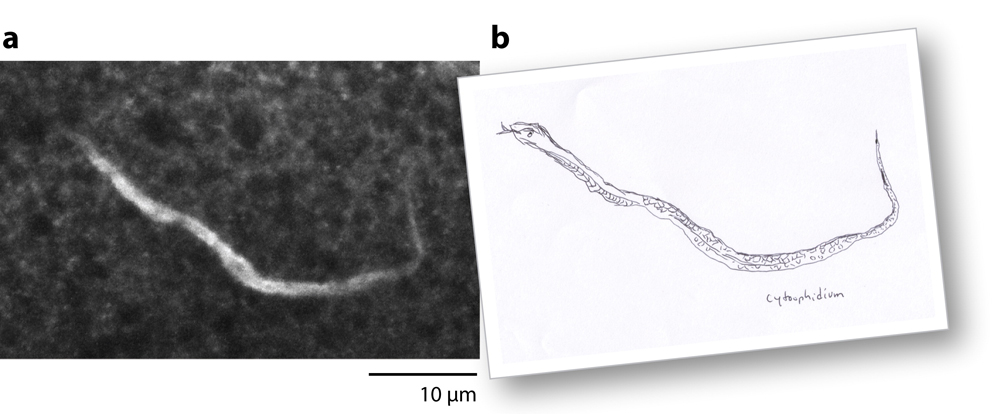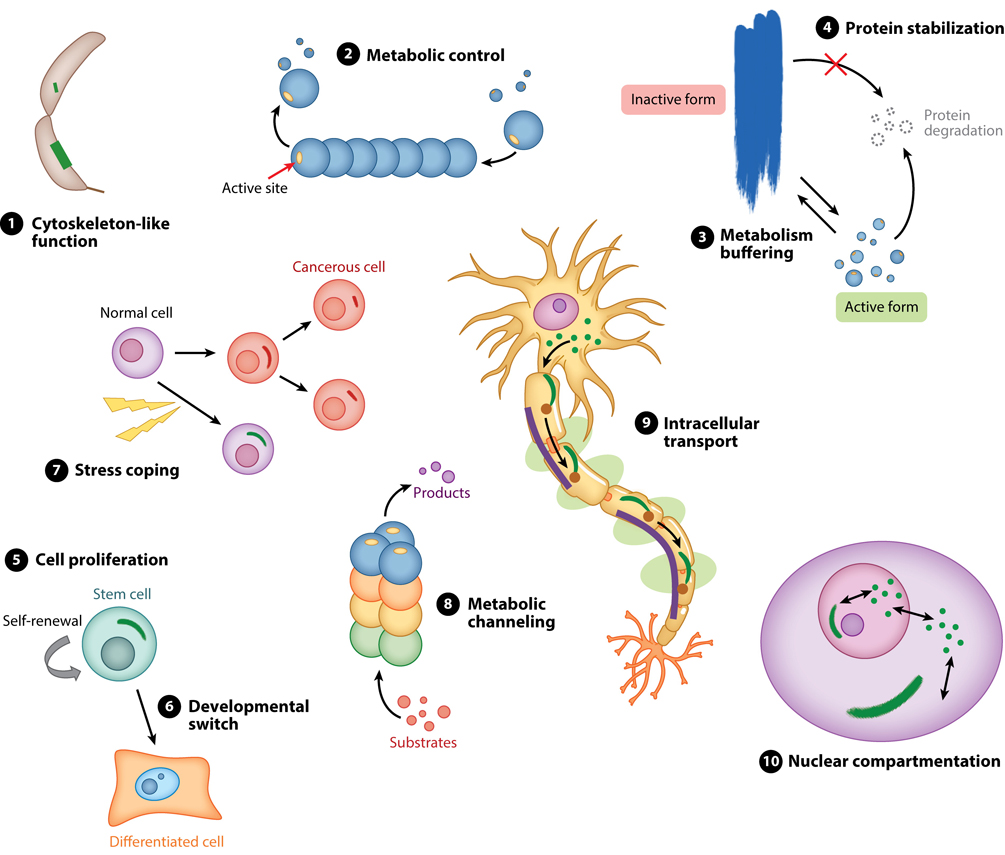Professor Ji-Long Liu from ShanghaiTech University’s School of Life Science and Technology (SLST) was invited to write an in-depth review on cytoophidia, which are newly discovered snake-shaped organelles. The review article, entitled The Cytoophidium and its Kind: Filamentation and Compartmentation of Metabolic Enzymes, has recently been published in Annual Review of Cell and Developmental Biology, a prestigious peer-reviewed scientific journal.
Compartmentation of molecules is one of the key features that distinguish living systems from non-living systems. Intracellular compartmentation of biomolecules is critical for the survival of a cell. In 2010, Professor Liu, then at the University of Oxford, discovered that CTP synthase, a metabolic enzyme responsible for the synthesis of the nucleotide CTP, forms a novel type of filamentous structure in fruit fly cells. Professor Liu named this novel snake-shaped organelle as “the cytoophidium,” which means cell (cyto) snake (ophidium) in Greek. Unlike classical membrane-bound organelles such as mitochondria and the Golgi apparatus, the cytoophidium is a membrane-less organelle. Subsequently, two American groups independently reported that CTP synthase forms filamentous structures in bacteria and budding yeast. In 2011, Liu’s group and another group in the USA independently discovered that cytoophidia exist in human cells as well. The presence of cytoophidia across diverse species from bacteria to humans suggests cytoophidia are evolutionarily conserved. Since many metabolic enzymes can be assembled in the cytoophidium and its kind, the study of the structure and function of cytoophidia emerges as one of the newest frontiers in cell biology.
In this review, Professor Liu began by summarizing the history of research on CTP synthase and cytoophidium. He clarified the nomenclature in the field of cytoophidia. Using the cytoophidium that contains CTP synthase as an example, Professor Liu expounded his view on several features including evolutionary conservation, morphology, composition, occurrence, dynamics, assembly and biogenesis of cytoophidia. He also speculated the physiological function of the cytoophidium and its potential links to disease. Moreover, he compared the relationship between two nucleotide metabolic enzymes (CTP synthase and IMP dehydrogenase) and explained the similarities and differences between these two types of cytoophidia. Finally, he discussed the benefits of filamentation and compartmentation of metabolic enzymes, particularly the impact on metabolic regulation.
Over the past nine years, Professor Ji-Long Liu’s group research at the University of Oxford was mainly funded by the UK Medical Research Council. In June 2016, Professor Liu joined SLST at ShanghaiTech University.Using fruit fly, yeast and human cells as prime model systems, he and his group will systematically study the composition, structure and function of cytoophidia.
Article Link:
http://www.annualreviews.org/doi/abs/10.1146/annurev-cellbio-111315-124907
Liu Lab:
http://www.shanghaitech.edu.cn/eng/faculty/slst/people/299.html

Fig 1
The cytoophidium: a snake in the cell. (a) A snake-like structure observed in aDrosophilaoocyte. This was one of the first images of cytoophidia obtained by antibody cross-reaction. (b) A drawing of a snake mimicking the image in panela.

Fig 2
Speculated functions of the cytoophidium.


